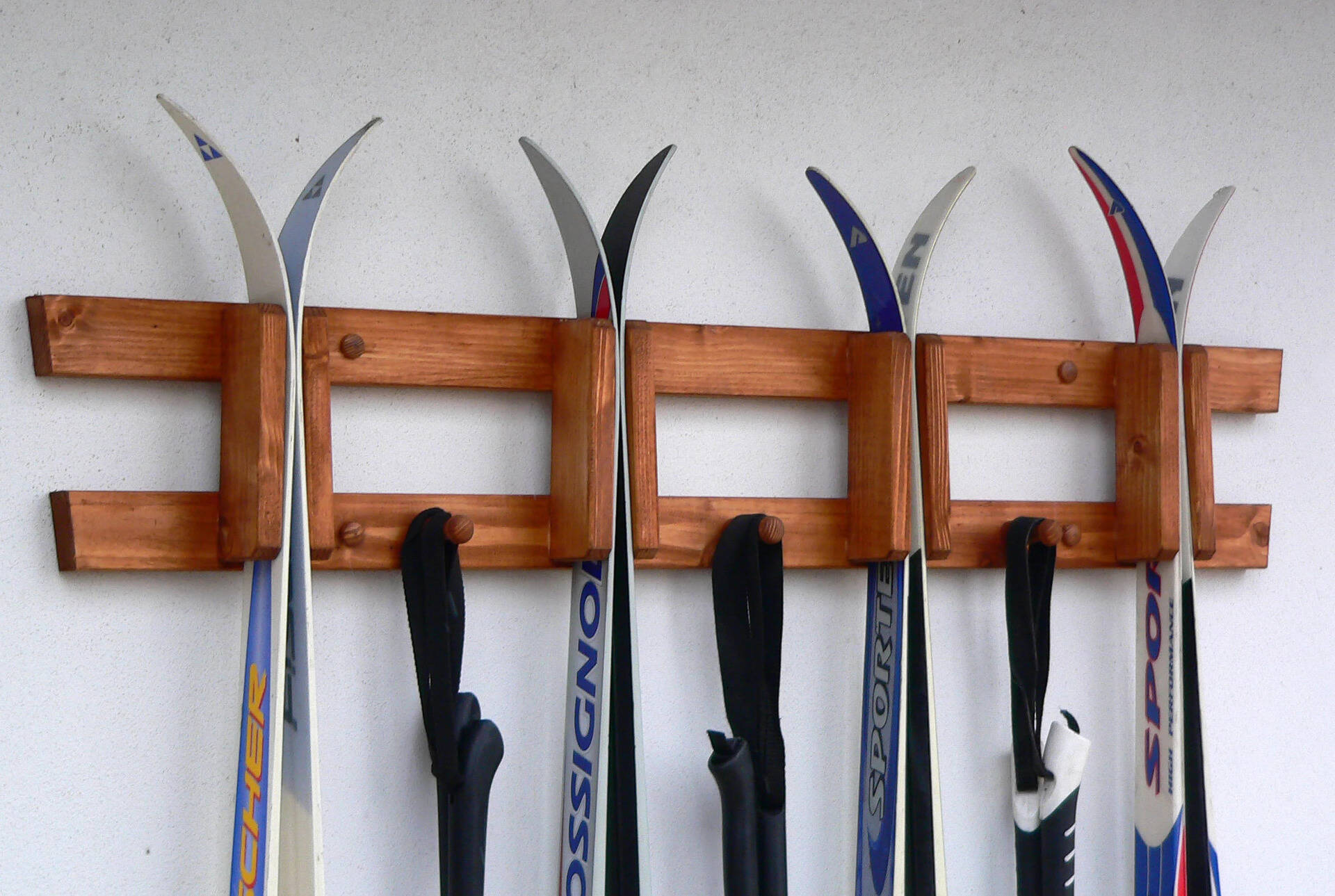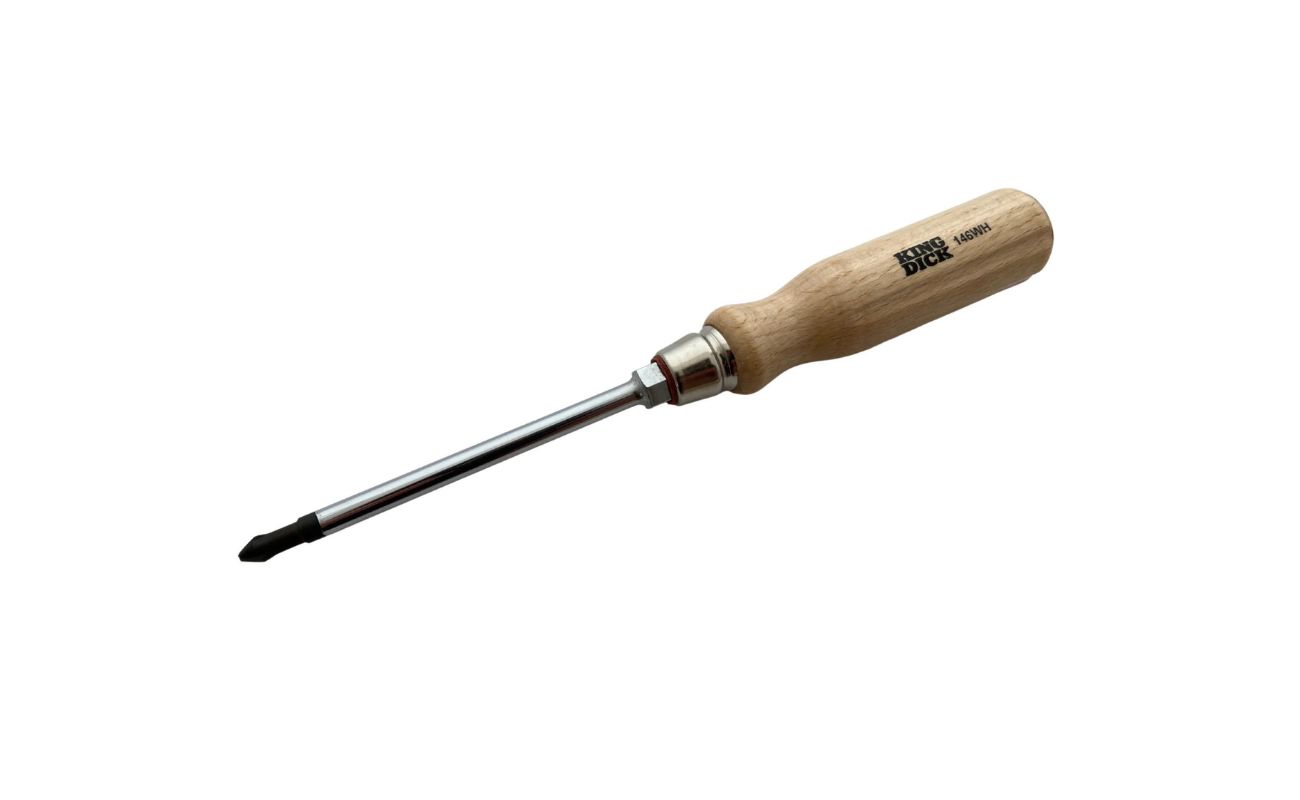

Articles
How To Store Cross Country Skis
Modified: December 7, 2023
Learn the best techniques for storing cross country skis in this comprehensive articles. Protect your equipment and extend its lifespan with these tips.
(Many of the links in this article redirect to a specific reviewed product. Your purchase of these products through affiliate links helps to generate commission for Storables.com, at no extra cost. Learn more)
Introduction
When the cross country skiing season comes to an end, it’s important to properly store your skis to ensure they remain in good condition for the next season.
Storing cross country skis may seem like a simple task, but there are a few key steps you need to follow to protect your equipment from damage and prolong its lifespan. In this article, we will guide you through the process of storing your cross country skis.
By taking the time to store your skis correctly, you can prevent rust, maintain the integrity of the ski base, and help your skis maintain their performance for years to come.
Let’s dive into what you need to know to properly store your cross country skis.
Key Takeaways:
- Properly storing cross country skis involves cleaning, waxing, and choosing the right storage location. This ensures protection from rust, moisture, and damage, preserving their performance for future seasons.
- Handling and transporting skis with care is essential to prevent damage. Using a ski bag, securing bindings, and avoiding extreme temperatures during transportation are crucial for maintaining their condition.
Read more: How To Store Skis At Home
Equipment Needed
Before you start storing your cross country skis, there are a few essential tools and equipment you will need:
- Ski bag or case: Having a ski bag or case is crucial for protecting your skis during storage and transportation. Look for a bag or case that provides padding and has enough room to accommodate your skis.
- Wax: It’s important to have ski wax on hand to properly maintain your skis. Waxing helps protect the bases and edges from moisture and oxidation.
- Waxing iron: A waxing iron is necessary for applying wax to your skis. Make sure to use a ski-specific waxing iron to ensure proper temperature control.
- Ski vise: A ski vise is a handy tool that holds your skis in place while you perform maintenance tasks such as waxing or tuning.
- Base cleaner: Base cleaner helps remove dirt and debris from the ski bases. Look for a cleaner that is safe for cross country ski bases and follow the manufacturer’s instructions.
- Brushes: Different brushes are used for various stages of ski maintenance. For example, nylon brushes are ideal for removing excess wax, while brass brushes help remove stubborn dirt and debris.
- Storage rack: If you opt for vertical storage, a storage rack will keep your skis organized and prevent them from leaning against each other, which can lead to warping.
- Dehumidifier: If you live in a humid climate, using a dehumidifier in your storage area can help prevent moisture damage to your skis.
Having these items on hand will ensure that you have everything you need to properly store and maintain your cross country skis.
Preparing Skis for Storage
Before you store your cross country skis, it’s important to properly prepare them to ensure they remain in good condition and are ready to hit the slopes next season. Here are the steps you should follow:
- Clean the ski bases: Start by using a base cleaner and a soft cloth or sponge to wipe down the ski bases. Remove any dirt, wax residue, or debris that may have accumulated during your last ski outing. This step is crucial to prevent any corrosion or damage to the base material.
- Inspect the ski edges: Take a close look at the edges of your skis. Look for any signs of rust, corrosion, or damage. If you notice any issues, lightly sand the affected area with a fine-grit sandpaper or use a ski-specific rust eraser to remove the rust or corrosion.
- Apply a protective wax: Once the ski bases are clean and dry, apply a layer of storage wax to protect the bases during the off-season. Storage wax helps to prevent oxidation and moisture absorption. Apply the wax evenly using a waxing iron, following the manufacturer’s instructions.
- Remove excess wax: After applying the storage wax, use a nylon brush to remove any excess wax from the ski bases. Brush from tip to tail of the skis to ensure an even distribution and to remove any excess wax that may hinder performance once you hit the slopes again.
- Protect the bindings: If your skis have adjustable bindings, make sure they are in the closed position. This helps protect the binding mechanisms and prevents any accidental damage during storage or transportation.
By following these steps, you’ll ensure that your skis are clean, protected, and ready for storage. Taking the time to properly prepare your skis will help maintain their performance and extend their lifespan.
Choosing the Right Storage Location
Choosing the right storage location for your cross country skis is crucial in ensuring their protection and longevity. Here are some factors to consider when selecting a suitable storage area:
- Temperature and humidity: Ideally, the storage area should be cool and dry. Avoid areas that experience extreme temperature fluctuations or high humidity levels, as this can cause damage to the skis. Moisture can lead to rust formation, while excessive heat can cause the bases to warp.
- Avoid direct sunlight: Sunlight can fade the colors of your skis and cause the bases to deteriorate. Choose a storage area that is shielded from direct sunlight to protect your skis and maintain their appearance.
- Sufficient space: Make sure the storage area has enough room to accommodate your skis. Avoid overcrowding or stacking them, as this can lead to pressure points and potential damage.
- Secure and protected: It’s important to store your skis in a location where they will be safe from potential damage. Keep them away from areas that are prone to impacts or where they could potentially be knocked over or stepped on.
- Consider vertical storage: Storing your skis vertically can help prevent warping of the skis over time. If you have limited space, consider investing in a ski storage rack, which will keep your skis organized and properly supported.
- Dehumidify if necessary: If your storage area is prone to high humidity levels, use a dehumidifier to help control moisture. Excessive moisture can lead to corrosion and damage to your skis.
By choosing a storage location that meets these criteria, you’ll help ensure that your cross country skis remain in optimal condition throughout the off-season.
Cleaning and Drying Skis
Properly cleaning and drying your cross country skis before storage is essential to prevent moisture buildup, rust, and damage. Here’s how to effectively clean and dry your skis:
- Remove any dirt and debris: Use a soft brush or cloth to remove any dirt, mud, or debris from the ski bases. Pay special attention to the areas around the bindings and the edges.
- Wipe down the bases: After removing loose dirt, use a damp cloth or sponge to wipe down the ski bases. This will help remove any remaining residue and keep the bases clean. Avoid using harsh chemicals or abrasive cleaners that can damage the ski bases.
- Dry the skis thoroughly: After cleaning, make sure to dry the skis thoroughly before storage. Use a clean, dry towel to remove any remaining moisture from the bases. It’s essential to ensure that there is no water remaining on the skis, as this can lead to rust or damage over time.
- Avoid drying near direct heat: While it’s important to dry the skis, avoid placing them near direct heat sources such as heaters or radiators. Excessive heat can cause the bases to warp or delaminate. Instead, allow the skis to air dry in a cool, well-ventilated area.
- Inspect for any damage: While cleaning and drying your skis, take the opportunity to inspect them for any signs of damage. Look for chips or gouges in the bases, loose bindings, or any other issues that may require repair before storage.
By thoroughly cleaning and drying your skis before storage, you’ll remove any dirt, debris, or moisture that can lead to long-term damage. It’s important to perform these steps to ensure your skis remain in the best possible condition during the off-season.
Read more: How To Store Ski Clothes
Waxing Skis
Waxing your cross country skis is a crucial step in their maintenance and preparation for storage. Applying a protective layer of wax helps to preserve the ski bases and maintain their performance. Here’s a step-by-step guide on how to wax your skis:
- Clean the ski bases: Before waxing, make sure the ski bases are clean and free from any dirt or debris. Refer to the previous section on cleaning and drying your skis for detailed instructions.
- Select the appropriate wax: Choose a storage wax that is suitable for your ski type and the climate conditions in your area. Storage waxes are typically softer and offer better protection against oxidation during the off-season.
- Heat the wax: Use a waxing iron to heat the wax. Set the iron to the recommended temperature specified by the wax manufacturer. Allow the wax to melt evenly on the iron’s surface.
- Apply the wax: Slowly and steadily, apply the melted wax to the ski bases, moving the iron from the tip to the tail of each ski. Maintain a smooth and even application of the wax, making sure to cover the entire base surface.
- Distribute the wax: Once you’ve applied the wax, use the waxing iron to gently spread and distribute the wax across the ski bases. This helps to ensure an even coating of wax and facilitates its absorption into the ski bases.
- Allow the wax to cool and harden: Let the skis sit for at least 30 minutes to allow the wax to cool and harden on the bases. This will ensure that the wax properly adheres to the ski surfaces and provides maximum protection during storage.
- Remove excess wax: After the wax has cooled and hardened, use a nylon brush to remove any excess wax from the ski bases. Brush with long, smooth strokes, moving from tip to tail, until the bases have a smooth and polished appearance.
Waxing your skis before storage helps to protect the bases from oxidation and moisture damage. It’s a crucial step in maintaining the performance and longevity of your cross country skis.
Store cross country skis in a cool, dry place away from direct sunlight. Keep them in a ski bag or wrap them in a protective cover to prevent damage. Store them in a horizontal position to avoid warping.
Protecting Skis from Damage
To ensure the longevity of your cross country skis during storage, it’s important to take steps to protect them from potential damage. Here are some measures you can take:
- Use ski brakes or straps: If your skis have ski brakes, make sure they are engaged to prevent the skis from sliding or rolling. Alternatively, use ski straps to hold the skis together tightly.
- Avoid placing heavy objects on top: Be mindful of what you place on top of your skis during storage. Avoid placing heavy objects or stacking other equipment on top of them, as this can cause unnecessary pressure and potential damage to the skis.
- Store skis in a safe location: Choose a storage area that is safe and away from high traffic areas. Keep your skis in a location where they are less likely to be accidentally knocked over or damaged.
- Protect the ski edges: To prevent damage to the ski edges, consider using edge protectors or wrapping the skis in a soft cloth or towel. This will help protect the edges from accidental impact or scratches during storage.
- Avoid extreme temperature fluctuations: Rapid temperature changes can cause the skis to expand and contract, potentially leading to warping or damage. Store your skis in a location where they are not exposed to extreme temperature fluctuations.
- Inspect and repair when necessary: Regularly inspect your skis for any signs of damage, such as delamination, cracks, or loose bindings. If you notice any issues, it’s essential to address them promptly and get them repaired before storing the skis.
- Keep skis away from corrosive substances: Avoid storing your skis near any corrosive substances or chemicals, as they can cause damage to the ski bases, edges, or bindings.
By taking these precautions, you can protect your cross country skis from potential damage and ensure that they remain in great condition throughout the storage period. Proper care and attention will help preserve their performance and extend their lifespan.
Storing Skis in a Vertical Position
Storing your cross country skis in a vertical position is an excellent option to maintain their shape and prevent warping. Here’s how to properly store your skis in a vertical position:
- Invest in a ski storage rack: Purchase a ski storage rack designed for vertical storage. These racks typically have slots or pegs where you can securely place the skis. Look for racks that provide proper support and spacing to ensure that the skis are held upright and do not lean against each other.
- Position skis with bindings facing outward: When placing the skis in the storage rack, position them with the bindings facing outward. This allows for easier access and helps maintain the alignment of the skis.
- Maintain proper spacing: Ensure that there is enough space between each pair of skis on the storage rack. This prevents the skis from rubbing against each other, which can cause damage to the bases or edges.
- Secure the skis in place: Once you have positioned the skis in the storage rack, make sure they are securely held in place. Double-check that they are stable and won’t accidentally fall or tip over during storage.
- Choose a suitable location: Place the storage rack in a cool, dry area away from direct sunlight and potential hazards. Avoid locations where there is excessive moisture or significant temperature fluctuations.
- Regularly inspect and rotate: Periodically check the stored skis for any signs of damage or warping. If you notice any issues, address them promptly. Additionally, consider rotating the skis every few weeks to minimize any potential pressure points.
Storing your cross country skis in a vertical position helps maintain their shape and alignment. It also saves space and allows for easy access when you’re ready to use them again. By following these guidelines, you can ensure that your skis remain in optimal condition during the storage period.
Storing Skis in a Horizontal Position
If you don’t have the space or prefer not to store your cross country skis in a vertical position, storing them horizontally is another viable option. Here’s how to properly store your skis in a horizontal position:
- Prepare a flat and even surface: Find a flat and stable surface to store your skis. Make sure the surface is clean and free from any debris that could potentially scratch or damage the ski bases.
- Keep the skis parallel: Place the skis parallel to each other, with the bases facing upward. This helps distribute the weight evenly and minimizes any stress on the skis.
- Insert a soft cloth: To further protect the ski bases, you can insert a soft cloth or felt between the skis. This helps prevent them from rubbing against each other and reduces the risk of scratches or damage.
- Use ski straps or bungee cords: To keep the skis securely together, you can use ski straps or bungee cords. Wrap them around the skis, tightening them enough to hold the skis in place but not so tight that they place excessive pressure.
- Choose a suitable location: Place the stored skis in a cool, dry area away from direct sunlight and extreme temperature fluctuations. Avoid locations with excessive moisture or high humidity levels.
- Rotate the skis periodically: Every few weeks, consider rotating the skis so that they are not constantly bearing the weight in the same spots. This helps minimize any potential pressure points and evenly distributes the load on the skis.
- Regularly inspect for any issues: During the storage period, regularly inspect the skis for any signs of damage, warping, or changes. If you notice any issues, address them promptly to prevent further damage.
Storing your cross country skis horizontally is a space-saving option and provides adequate protection when done correctly. By following these guidelines, you can ensure that your skis remain in good condition and are ready to hit the slopes when the next season arrives.
Read more: How To Store Ski Skins
Proper Handling and Transportation
Proper handling and transportation of your cross country skis are important to prevent any damage or accidents. Whether you’re taking them to the storage area or planning to transport them elsewhere, follow these guidelines:
- Use a ski bag or case: Invest in a ski bag or case to protect your skis during handling and transportation. Make sure the bag or case provides padding and sufficient room to accommodate your skis.
- Secure the skis in the bag or case: When placing the skis in the bag or case, ensure they are well-secured and won’t shift or rub against each other. Use straps or padding to keep them in place.
- Protect the ski bindings: If your skis have adjustable bindings, make sure they are closed and secured. This prevents any accidental movement of the bindings during transportation.
- Avoid rough handling: Be gentle when handling your skis, especially when placing them down or moving them. Avoid dropping or banging them against hard surfaces, as this can damage the ski bases or edges.
- Secure skis for transportation: If you’re transporting your skis in a vehicle, make sure they’re securely fastened. Use ski racks or a specialized ski carrier on your vehicle’s roof, or use dedicated compartments if available.
- Avoid extreme temperatures: During transportation, try to avoid exposing your skis to extreme temperatures. If the weather is too hot or cold, consider using an insulated ski bag or case to protect them from temperature fluctuations.
- Be mindful of other objects: When transporting your skis, be cautious of other objects that could potentially damage them. Keep them separate from sharp or heavy items, and be cautious of closing any doors or hatches that could accidentally press on the skis.
- Handle with care: Remember to always handle your skis with care to avoid any harm to yourself or others. When carrying them, hold them securely and be aware of their length to prevent accidentally hitting anyone nearby.
By following these proper handling and transportation practices, you can ensure that your cross country skis remain in great condition and are ready to use when needed. Taking the time to handle and transport them carefully is essential for preserving their performance and longevity.
Conclusion
Properly storing your cross country skis is crucial to preserve their performance and extend their lifespan. By following the steps outlined in this article, you can ensure that your skis remain in optimal condition during the off-season and are ready to hit the slopes when the next season arrives.
First, gather the necessary equipment, including a ski bag or case, wax, waxing iron, ski vise, brushes, storage rack, and dehumidifier if needed. These tools will help you in cleaning, waxing, and protecting your skis.
Start by preparing your skis for storage. Clean the ski bases, inspect the edges for any damage, and apply a protective layer of wax. This will help prevent rust, oxidation, and moisture absorption.
Choose the right storage location, considering factors like temperature, humidity, and sunlight exposure. Whether you opt for vertical or horizontal storage, make sure the skis are securely positioned, properly spaced, and protected from potential damage.
Regularly inspect your skis for any signs of damage or warping, and address any issues promptly. Proper handling and transportation are also important to avoid accidents and protect your skis. Use a ski bag or case, secure the skis, and handle them with care to prevent any damage during transportation.
By implementing these storage and maintenance practices, you can prolong the life of your cross country skis and ensure they maintain their performance for years to come. Remember, taking the time to store your skis properly now will pay off when the next ski season arrives.
Enjoy your time on the slopes and happy skiing!
Frequently Asked Questions about How To Store Cross Country Skis
Was this page helpful?
At Storables.com, we guarantee accurate and reliable information. Our content, validated by Expert Board Contributors, is crafted following stringent Editorial Policies. We're committed to providing you with well-researched, expert-backed insights for all your informational needs.














0 thoughts on “How To Store Cross Country Skis”